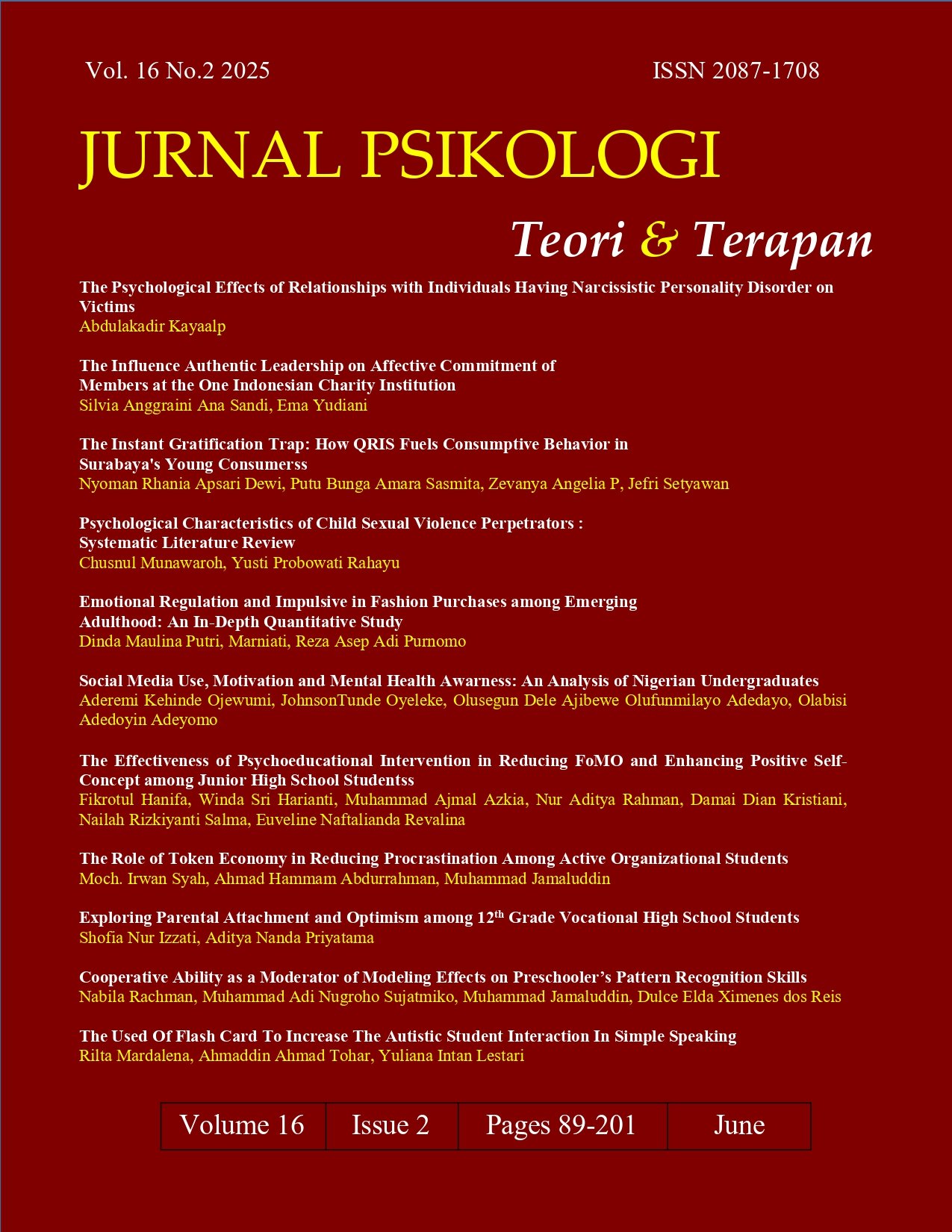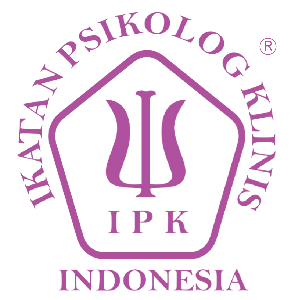The Used Of Flash Card To Increase The Autistic Student Interaction In Simple Speaking
DOI:
https://doi.org/10.26740/jptt.v16n02.p190-201Keywords:
Autistic, flash card, mew vocabularyAbstract
Background: The students difficulties to make interaction with their teacher in the classroom, The process of teaching new vocabulary by using flash card. Objective: To know the autistic students in interaction, and the student’s response to it thus making the learning process easier. Methode: The writer conducted Classroom Action Research (CAR) which consists of two cycles, each cycle consists of four elements, namely: planning, acting, observing and reflecting. The writer doing the observation about January to March. Result: the students can implementation their vocabulary in simple speaking, the students have good eye contact, at the studied, the students can focus and giving good attention, the students can make good appropriate play with peers. The autistic students have a good dialog in simple speaking, and they can make minimal five different sentence of the some word who know. Conclution: The problem in the cycle is usually the students got difficulty to memorize the words and they easily get bored in studying English. To answer the problems the writer uses flash card to increase the student’s vocabulary.
Abstrak
Latar Belakang: Kesulitan siswa dalam berinteraksi dengan guru di kelas, Proses pengajaran kosakata baru dengan menggunakan flash card. Tujuan: Untuk mengetahui siswa autis dalam berinteraksi, dan respon siswa terhadapnya sehingga membuat proses pembelajaran lebih mudah. Metode: Penulis melakukan Penelitian Tindakan Kelas (PTK) yang terdiri dari dua siklus, setiap siklus terdiri dari empat elemen, yaitu: perencanaan, tindakan, pengamatan dan refleksi. Penulis melakukan observasi sekitar bulan Januari sampai Maret. Hasil: siswa dapat mengimplementasikan kosakata mereka dalam berbicara sederhana, siswa memiliki kontak mata yang baik, pada saat belajar, siswa dapat fokus dan memberikan perhatian yang baik, siswa dapat melakukan permainan yang tepat dengan teman sebaya. Siswa autis memiliki dialog yang baik dalam berbicara sederhana, dan mereka dapat membuat minimal lima kalimat yang berbeda dari beberapa kata yang mereka ketahui. Kesimpulan: Masalah dalam siklus ini biasanya siswa mengalami kesulitan untuk menghafal kata-kata dan mereka mudah bosan dalam belajar bahasa Inggris. Untuk menjawab masalah tersebut penulis menggunakan flash card untuk meningkatkan kosakata siswa.
References
Aldabas, R. (2022). Effects of peer network intervention through peer-led play on basic social communication skills of children with Autism Spectrum Disorder in inclusive classrooms. Journal of Developmental and Physical Disabilities, 34, 1121–1148. https://doi.org/10.1007/s10882-022-09840-1
Alanazi, A. S., Almulla, A. A., & Khasawneh, M. A. S. (2023). Evaluating the effects of integrating cognitive presence strategies on teacher attitudes and student learning outcomes in special education and autism classrooms. International Journal of Special Education, 38(2), 80–89. https://doi.org/10.52291/ijse.2023.38.24
Amin, I. M., Hastuti, W. D., & Salsabila, A. Z. (2024). Development of flashcard media based on augmented reality to improve speaking skills for autistic students. Indonesian Journal of Educational Development (IJED), 5(2), 258–271. https://doi.org/10.59672/ijed.v5i2.3740
Aulia, R. (2018). Strategi pembelajaran untuk anak berkebutuhan khusus dalam meningkatkan keterampilan berbahasa. PT RajaGrafindo Persada.
Barrett, L. F. (2017). How emotions are made: The secret life of the brain. Houghton Mifflin Harcourt.
Barnhart, C. L. (1962). The role of vocabulary in reading and writing. Harper & Row.
Braconnier, M. L., & Siper, P. M. (2021). Neuropsychological assessment in autism spectrum disorder. Current Psychiatry Reports, 23, 63. https://doi.org/10.1007/s11920-021-01277-1
Burns, A. (2010). Doing action research in English language teaching: A guide for practitioners. Routledge.
Chandra, A. (2019). Penggunaan media visual dalam pembelajaran bahasa bagi anak autis. Alfabeta.
Cheng, M.-M., Rosin, P. L., Hou, Q.-B., & Zhang, S.-H. (2017). Intelligent visual media processing: When graphics meets vision. Journal of Computer Science and Technology, 32(1), 110–121. https://doi.org/10.1007/s11390-017-1681-7
Chung, M. A., & D. T. K. (2023). The efficacy of visual aids in enhancing vocabulary acquisition in EFL classes. International Journal of Social Science and Human Research, 6(10). https://doi.org/10.47191/ijsshr/v6-i10-80
Faridah, F., Fatmawaty, R., & Setyaningrum, R. R. (2021). Vocabulary materials based on picture media for autistic students. Linguistic, English Education and Art (LEEA) Journal, 4(2), 425–435. https://doi.org/10.31539/leea.v4i2.1777
Hasibuan, S. W. (2021). Teaching techniques of English (Islamic) vocabulary for hadith students in STAIN Mandailing Natal. Journal of English Education and Linguistics, 2(2), 60–67. https://doi.org/10.56874/jeel.v2i2.553
Hikmah, N. (2021). Pembelajaran kosakata Islami bagi siswa autis: Metode dan tantangannya. UIN Malang Press.
Huang, X., Liu, C., Tang, Z., Zeng, S., Wang, S., & Zhou, P. (2023). An ultrafast bipolar flash memory for self-activated in-memory computing. Nature Nanotechnology, 18, 486–492. https://doi.org/10.1038/s41565-023-01339-w
Indah, R. N., & Rohmah, G. N. (2020). Islamic vocabulary enrichment for autistic children through visual support. Proceedings of the 2nd International Conference on Quran and Hadith Studies Information Technology and Media in Conjunction with the 1st International Conference on Islam, Science and Technology (ICONQUHAS & ICONIST), 1–6. http://dx.doi.org/10.4108/eai.2-10-2018.2295405
Ingebrigtsen, M., Miland, Å. O., Bastesen, J., & Sæle, R. G. (2024). Effective, scalable and low-cost: The use of teacher-made digital flashcards improves student learning. Center for Open Science. https://doi.org/10.31234/osf.io/h2kgx
Krashen, S. D. (1982). Principles and practice in second language acquisition. Pergamon Press.
Marsaulina, A., Latief, A., & Iragiliati, E. (2015). The effectiveness of using related words and unrelated words in teaching vocabulary for seventh graders. Jurnal Pendidikan Humaniora, 3(1), 52–59. https://doi.org/10.17977/jph.v3i1.4822
Madipakkam, A. R., Rothkirch, M., Dziobek, I., & Sterzer, P. (2017). Unconscious avoidance of eye contact in autism spectrum disorder. Scientific Reports, 7(1). https://doi.org/10.1038/s41598-017-13945-5
Muffti, A., Salam, M. Y., & Kiat, T. (2025). Empowering the use of vocabulary card in students at Adameesuksavittaya School Krabi Thailand to improve vocabulary in Arabic language mastery. Pengabdian: Jurnal Abdimas, 3(1), 46–53. https://doi.org/10.70177/abdimas.v3i1.1628
Nation, I. S. P. (2022). Learning vocabulary in another language. Cambridge University Press. https://doi.org/10.1017/9781009093873
Noskova, T. N., Yakovleva, O. V., Pavlova, T. B., & Smyrnova-Trybulska, E. (2018). Strategies of students' information behaviour in the context of lifelong learning. Open Education, 22(3), 25–34. https://doi.org/10.21686/1818-4243-2018-3-25-34
Petersson-Bloom, L., & Holmqvist, M. (2022). Strategies in supporting inclusive education for autistic students—A systematic review of qualitative research results. Autism & Developmental Language Impairments, 7, 239694152211234. https://doi.org/10.1177/23969415221123429
Rutter, M. (1978). Diagnosis and definition of childhood autism. Journal of Autism and Childhood Schizophrenia, 8(2), 139–161. https://doi.org/10.1007/BF01537863
Santrock, J. W. (2019). Educational psychology (6th ed.). McGraw-Hill.
Siregar, S. D. P., Safrudin, R., Hardin, N. I., Al Farisi, M. Z., El-Sabagh, M. M. H., & Sopian, A. (2025). Arabic writing skills teaching materials based on graphemics for autistic students. Asian Education and Development Studies, 14(3), 495–517. https://doi.org/10.1108/aeds-08-2024-0171
Strain, P. S., Kerr, M. M., & Ragland, E. U. (1979). Effects of peer-mediated social initiations and prompting/reinforcement procedures on the social behavior of autistic children. Journal of Autism and Developmental Disorders, 9(1), 41–54. https://doi.org/10.1007/BF01531291
Suyitno, S., & Fadhilawati, D. (2024). Unleashing the power of Quizizz paper mode to refine senior high school students’ Islamic vocabulary mastery. Jurnal Komunikasi Pendidikan, 8(1), 12–24. https://doi.org/10.32585/jurnalkomdik.v8i1.4847
Wijaya, A. (1993). English vocabulary and its importance in language learning. Gramedia.
Yuwono, G. (2018). Metode pembelajaran bahasa Inggris untuk anak dengan autisme. Unesa Press.
Downloads
Published
How to Cite
Issue
Section
License
Copyright (c) 2025 Rilta Mardalena, Ahmaddin Ahmad Tohar, Yuliana Intan Lestari

This work is licensed under a Creative Commons Attribution 4.0 International License.
Authors who publish in this journal agree to the following terms:
Copyright in any article is held by the author.
The author grants the journal, publication rights with the work simultaneously licensed under a Creative Commons Attribution License that allows others to share the work with an acknowledgment of the work's authorship and initial publication in this journal.
Authors may enter into separate, additional contractual arrangements for the non-exclusive distribution of the journal's published version of the work (e.g., posting it to an institutional repository or publishing it in a book), with an acknowledgment of its initial publication in this journal.
Authors are permitted and encouraged to post their work online (e.g., in an institutional repository or on their website) prior to and during the submission process, as this can lead to productive exchanges, as well as earlier and greater citation of published work.
 Abstract views: 240
,
Abstract views: 240
, PDF Downloads: 182
PDF Downloads: 182


















